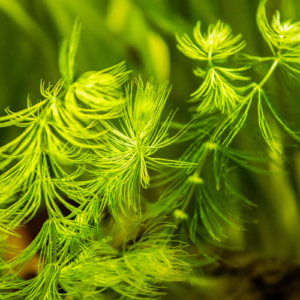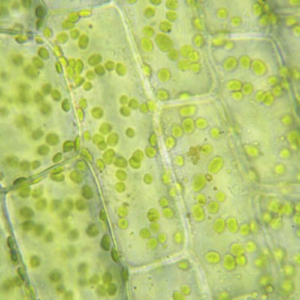Elodea (pondweed) cells
Compound microscope activity sheet

Materials
- Glass microscope slides
- Plastic cover slips
- Paper towels or tissues
- Salt solution (6 g salt dissolved in 100 ml of water or approx. 2 teaspoons salt in a cup of water)
- Elodea
- Water
Methods

- Pick off an entire healthy looking Elodea leaf, with fingers or small scissors and place it on the microscope slide.
- Add a drop of water (hypotonic solution) and a coverslip and observe the chloroplasts (green structures) and the cell walls.
- Add a drop of salt solution (hypertonic solution) to the side of the coverslip and observe the cell shrinking (optional).
Fun facts:
When the salt solution is added, the salt ions outside the cell membrane cause the water molecules to leave the cell through the cell membrane causing it to shrink into a blob in the centre of the cell wall. The movement of water molecules is called osmosis.
Elodea is a genus of submerged aquatic plants used in aquariums. You should be able to buy this from pet shops. If not, you can purchase it from a school supplier. Elodea canadensis is a species that works well for this activity, because it has thin, straight leaves. However, most other species are satisfactory.



